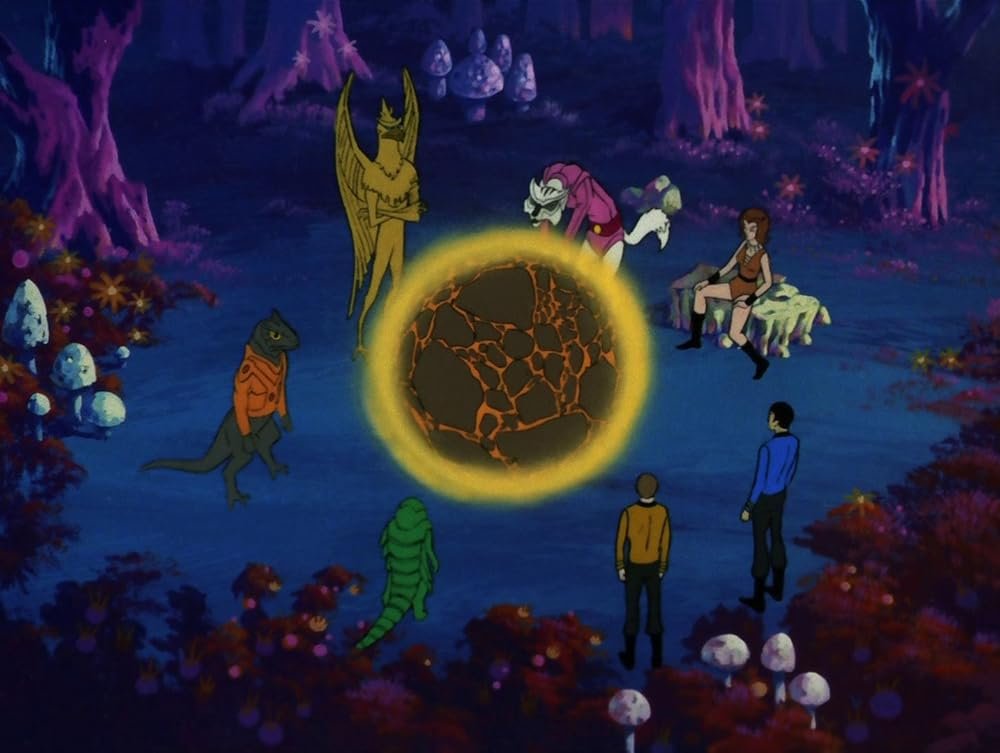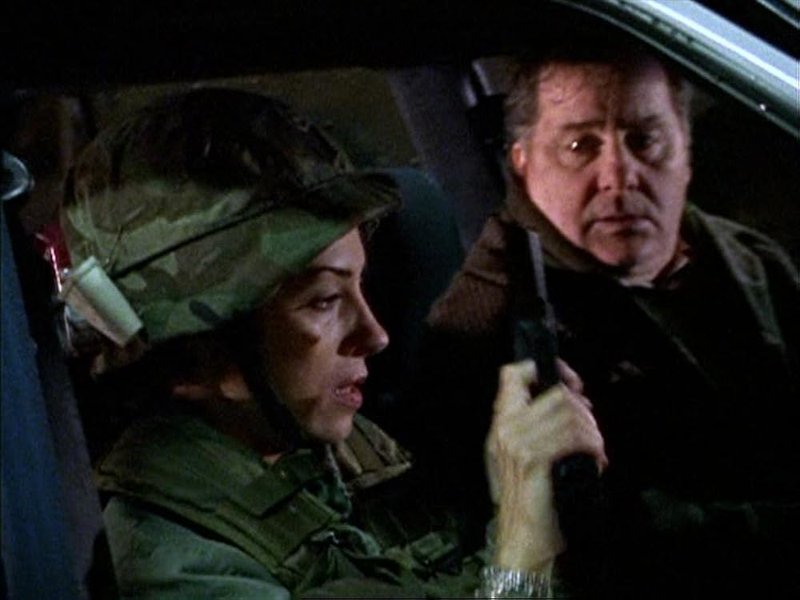Television Review: The Jihad (Star Trek: The Animated Series, S1X16, 1974)
0 comments

The Jihad (S01E16)
Airdate: January 12th 1974
Written by: Joyce Perry
Directed by: Hal Sutherland
Running Time: 22 minutes
Fifty years ago, Hollywood could tackle themes and titles that modern sensitivities might reflexively condemn, particularly in contexts deemed inappropriate for family entertainment. The Season 1 finale of Star Trek: The Animated Series, titled The Jihad, epitomises this audacity. Had the episode aired today, its very title—a direct reference to the Arabic term al-jihād—would likely spark outcry from overzealous critics, irrespective of context. Many would dismiss it as “racist” or “Islamophobic” without engaging with its narrative. The irony is that the episode’s use of “jihad” is neither literal nor pejorative; it instead employs the term’s broader, more neutral connotation of “struggle” or “effort.” A more controversial title, such as the common mistranslation “The Holy War,” might have been more contentious, yet the plot itself revolves around a mission to prevent a galaxy-wide religious conflict—making “jihad” fitting if misinterpreted. This episode, though flawed, showcases an era when creators dared to use language without preemptive self-censorship, even in a children’s animated series.
The episode follows the Enterprise crew on a clandestine mission commissioned by the ancient Vedala, the oldest race in the galaxy. They assemble a team of specialists to recover the “Soul of the Skorr,” a sacred religious artifact. Kirk and Spock are joined by Tchar, the hereditary prince of the avian-like Skorr; Sord, a reptilian powerhouse; Em/3/Green, an insectoid coward renowned as the galaxy’s best lockpick; and Lara, a humanoid huntress with unmatched tracking skills. During the briefing, Tchar reveals that the Soul of the Skorr contains the brain patterns of Alar, a Skorr leader who abandoned his people’s violent past to promote peace. Its theft threatens to revive the Skorr’s militaristic traditions, plunging the galaxy into sectarian war. The team traces the artifact to a derelict, unstable “mad planet” where three previous expeditions met tragic ends. Upon arrival, the crew faces natural disasters—volcanoes, quakes, and biting winds—but soon suspects sabotage from within. Tensions escalate as misfortunes multiply, culminating in the revelation that Tchar himself orchestrated the theft, driven by a desire to reignite his species’ martial legacy. Kirk and Spock thwart his plan through zero-gravity combat training, securing the artifact. However, the Vedala, to preserve galactic harmony, erases all memories of the mission, sparing the galaxy a conflict but leaving the crew with fragmented recollections.
The Jihad stands out as an outlier in the Star Trek canon, both narratively and stylistically. Written by Stephen Kandel, The Original Series veteran and the creator of con artist Harry Mudd, the episode borrows heavily from his work on Mission: Impossible, particularly its ensemble-of-specialists framework. Yet Kandel infuses this formula with distinctly Star Trek-esque elements, such as interstellar diplomacy and anthropological curiosity. The team’s racial diversity—a hallmark of the franchise—is amplified through animation, allowing creative visual interpretations. The Skorr, with their feathered plumage and militaristic bearing, echo their fleeting appearance in . Other species, like Sord’s reptilian design and Em/3/Green’s insectoid form, exemplify the series’ imaginative flair. However, the episode’s deviations from traditional Star Trek aesthetics are more pronounced. For instance, Lara’s portrayal as a scantily clad, aggressively romantic huntress—voiced by Jane Webb—feels at odds with the show’s typically cerebral tone. Her bold advances toward Kirk, who here lacks his usual cadet-chasing bravado, inject an uncharacteristic edge into what is otherwise a procedural mission.
The animation itself betrays the era’s budget constraints, particularly in its reliance on recycled footage. Mechanical creatures resembling earlier antagonists appear throughout, their reused designs a cost-saving measure by Filmation Studios. This repetition occasionally distracts, though it also underscores the animation’s charm. The team dynamics, however, suffer less from economy. Despite the predictable twist—Tchar as the traitor—the episode’s pacing and character interplay hold interest. Spock’s logical deductions and Kirk’s leadership shine, while the supporting cast’s quirks (Em/3/Green’s cowardice, Sord’s gruff loyalty) add depth. The Vedala’s intervention, erasing the mission’s memory, introduces a morally ambiguous resolution, questioning whether peace justifies erasure—a theme Star Trek would revisit in later series.
Critics may dismiss The Jihad for its dated sensibilities and plot predictability, but it remains a competent, if flawed, entry in the animated series. Its willingness to tackle themes of religious conflict, cultural preservation, and ethical compromise aligns with Star Trek’s core values, even if its execution is uneven. While modern audiences might cringe at its title or certain character choices, The Jihad endures as a testament to an era when storytellers dared to push boundaries without fear of cancellation. In its blend of adventure and allegory, it remains a curious yet commendable relic of 1970s sci-fi—a reminder that even flawed narratives can spark meaningful dialogue.
RATING: 5/10 (++)
Blog in Croatian
Blog in English
InLeo blog
LeoDex:
InLeo:
Hiveonboard:
Rising Star game:
1Inch:
BTC donations: 1EWxiMiP6iiG9rger3NuUSd6HByaxQWafG
ETH donations: 0xB305F144323b99e6f8b1d66f5D7DE78B498C32A7
BCH donations: qpvxw0jax79lhmvlgcldkzpqanf03r9cjv8y6gtmk9




Comments